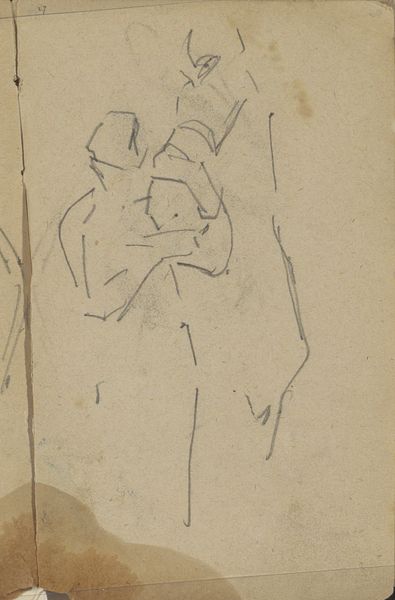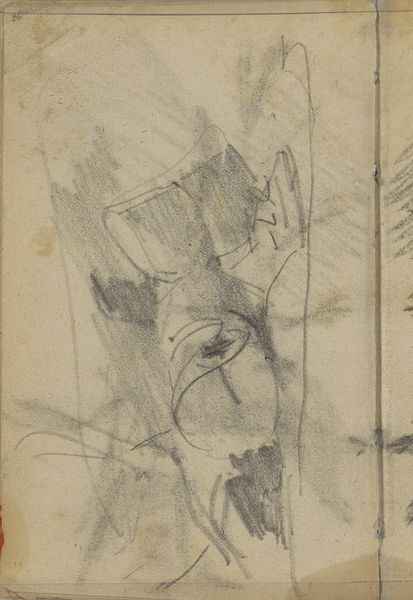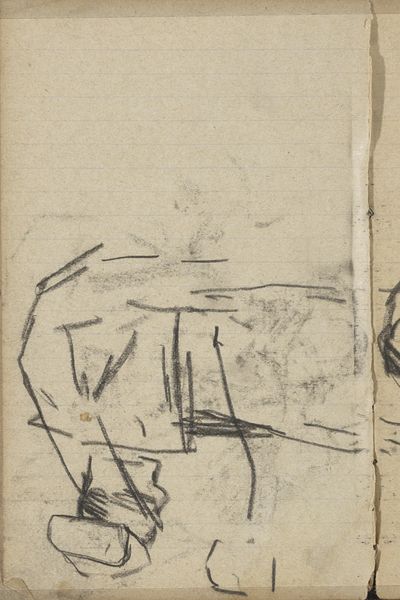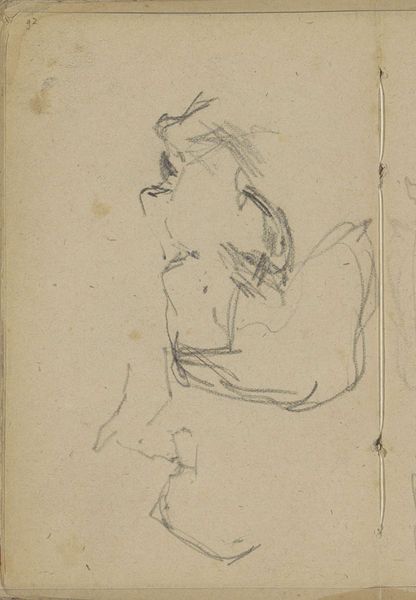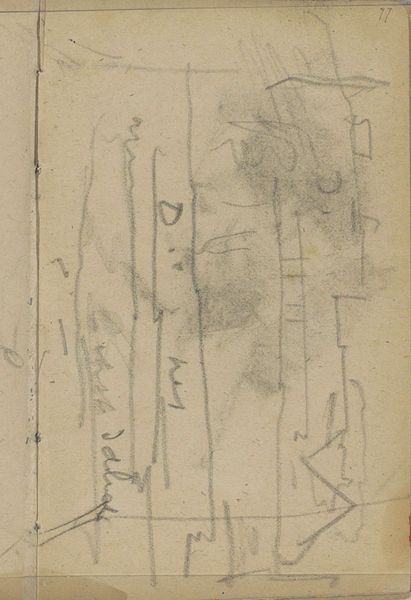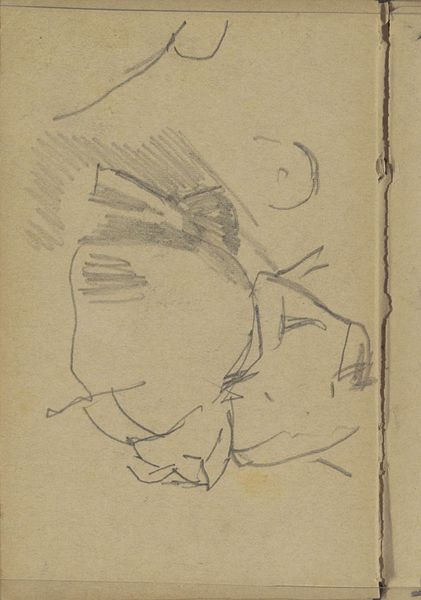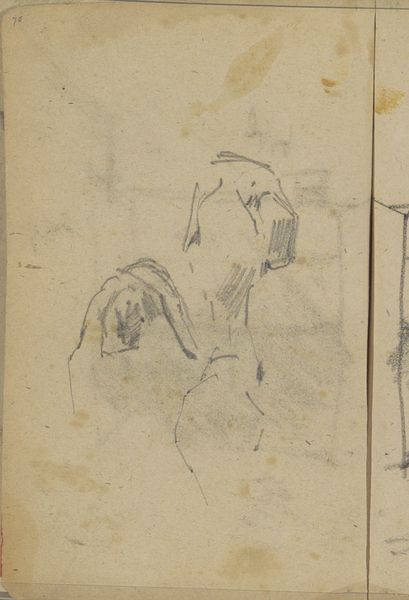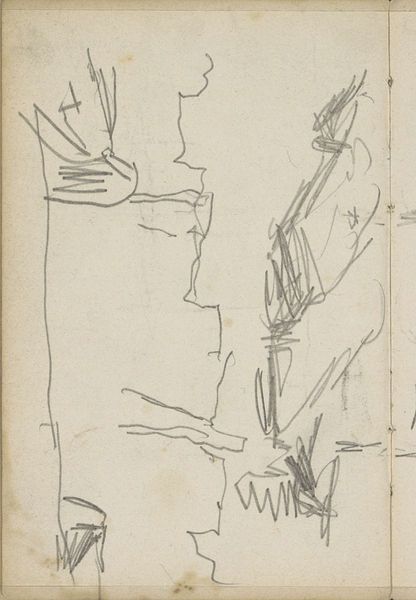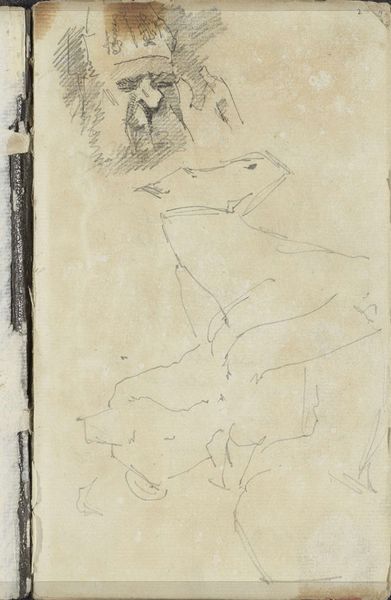
drawing, paper, pencil
#
drawing
#
impressionism
#
landscape
#
paper
#
form
#
pencil
#
line
Copyright: Rijks Museum: Open Domain
Curator: Welcome. Here we have George Hendrik Breitner's "Studieblad," created between 1881 and 1883. It’s a drawing on paper, employing pencil. You can see it in the Rijksmuseum’s collection. Editor: It has a ghostly presence. These almost translucent shapes barely exist. The overall impression is very fragmented, quite unsettling. Is it intentional, or just an incomplete thought? Curator: Breitner's landscapes, even in preliminary sketches like this, often capture a fleeting moment. The suggestive forms imply more than they show directly. Think about how the Impressionists were shifting from academic realism toward suggesting the sensations of light and movement. Editor: Exactly. The sketch seems less about a tangible location, more about recording raw visual information—the essence of seeing. The sharp diagonals contrast beautifully with the curving, looping forms near the bottom. They create a dynamic tension in an otherwise minimal composition. Curator: Beyond its formal properties, one has to think about how a study sheet such as this becomes a visual diary of sorts. Breitner lived through intense historical change and societal transformation. We may look at this now as art but Breitner was most likely jotting notes, trying out form ideas... Editor: You mean a sort of proto-snapshot, recording fleeting sensory data—the angles of a roof, the flow of a figure, almost subconsciously. What stories do these traces hint at? Curator: Exactly. Even in its unfinished form, "Studieblad" whispers volumes about an era undergoing modernization, capturing an ephemeral quality as he transitioned toward photographic means and tools. Editor: It's interesting how Breitner managed to evoke so much with so little. These lines don't describe; they hint, suggest, and even provoke. Curator: Yes, and perhaps it provokes thoughts about the past while questioning notions of the present, reminding us of shared heritage through form.
Comments
No comments
Be the first to comment and join the conversation on the ultimate creative platform.
